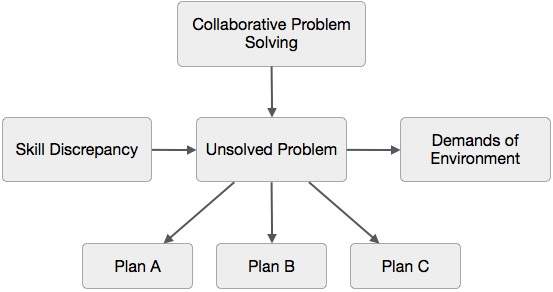
- Collaborative Management Tutorial
- Collaborative Management Home
- Introduction
- Collaboration System
- Leadership Styles
- Collaborative Approach
- Collaborative Tools
- The Arc's Model
- The ESSIM Initiative
- Collaborative System
- Change Management
- Collaborative Project Management
- Project Management Architecture
- Application & Implementations
- Conflict Management
- Case Study
- Useful Resources
- Quick Guide
- Useful Resources
- Discussion
Collaborative Approach
A collaborative approach is made not only in the corporate sector but in every professional as well as personal fields in solving disputes and taking effective and efficient decisions.
Collaborative Approach in Problem Solving
The Collaborative Problem Solving (CPS) model demonstrates effectiveness with employees with a wide range of professional, social, emotional, and behavioral challenges across a variety of different settings from various consumers, clients, team leaders, and team members in the company.
As applied to the organization, the model sets forth two major tenets −
First, the problems are well understood in terms of the cause, the issue, and the bugs present. (rather than pointing out mistakes of the team members)
Second, these problems are best addressed by mutual discussions where everybody speaks and everybody listens (rather than showing superiority and trying to dominate other members).
While solving a problem through collaborative approach, we must know that we are going to encounter unique alternatives for the single problem by different team members sharing a common idea to give the best way out of the problem.
Collaboratively resolving problems isn’t necessarily all that complicated, but it’s something for which the leaders need to have experience as well as patience, so it can take a while for all involved members to feel comfortable and keep their views open.
Plans of CPS
When a task completed doesn’t meet the objective to be achieved, we need a plan. CPS makes explicit those who really only have three options for how to respond to problems solving. We refer to these as our three Plans − Plan A, Plan B, and Plan C.
Plan A is very popular because we have good expectations from the team members, but pursuing those expectations using Plan A also greatly heightens the likelihood of challenging ideas from different members. That’s because the team leaders impose their will upon the trainees − that requires a skill that the trainees lack. So Plan A not only causes challenging behavior, but it does not teach the skills the trainees’ lack.
Plan C is being strategic. We can’t work on all the problems at once, and neither can all the objectives be achieved at the same time. Plan C is a way of prioritizing and deciding which tasks need to be accomplished first. By putting some problems or unmet expectations on the “back burner” while addressing problems that are of a higher priority, some challenging behaviors are reduced.
Plan B involves four basic steps.
Identifying and understanding the trainee’s concern and opinion about the problem.
Identifying and sharing the leader’s concerns about the same issue.
Brainstorming solutions and sharing views together with the leaders and trainees.
Working of the trainee and the leader together to assess potential solutions and choosing one that is both realistic, mutually satisfactory, effective, and efficient.
Plan B usually feels like slogging through mud in the beginning, but the continuous use of Plan B helps solve problems that are precipitating challenging behavior in a durable way while building healthy professional relationships, thinking skills, intrinsic motivation and confidence to achieve the objectives within a given time period.
The following illustration depicts collaborative problem solving −

Collaborative Approach in Wicked Problem Solving
Many Programs present complex problems that are difficult to resolve, but some throw up truly 'wicked problems' that project management professionals find absolutely impossible to tackle. These wicked problems are often difficult to define and are informed by a web of conflicting views from many team members typically from across organizational boundaries.
Project managers can address such wicked problems by adopting a collaborative approach that focuses on the underlying causes of the problem. Such an approach to resolving wicked problems includes three key features −
- A commitment to engage team members.
- Judgment based on both qualitative and quantitative techniques.
- Focus on results and benefits.
Team members engage in a collaborative journey of consultation and engagement with wicked problems. There are invariably a wide range of opinions and ideas on the nature of the problem and the ‘right’ solution. By bringing all the affected parties together, project managers can build a sense of shared ownership so that commitment to solutions and their delivery becomes much more likely.